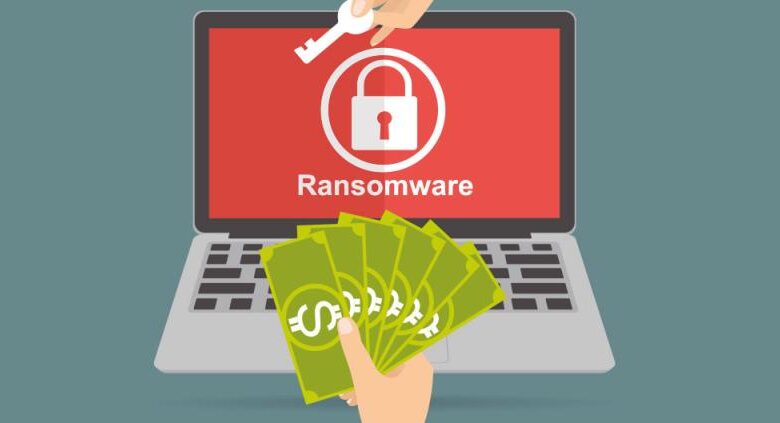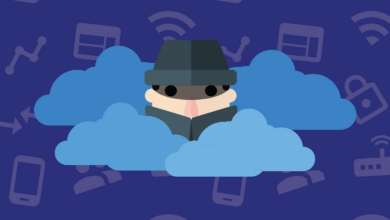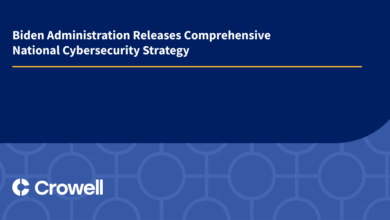
Dutch University Gets Back Double the Ransomware Payment
Dutch University Gets Back Double the Ransomware Payment – that’s the headline that’s been making waves! A Dutch university recently fell victim to a ransomware attack, a terrifying experience that crippled their systems and threatened vital data. What’s truly astonishing, however, is the university’s unexpected victory: not only did they recover their data, but they also received double the ransom they initially paid back.
This incredible turn of events raises a lot of questions about cybersecurity, law enforcement, and the sometimes bizarre world of cybercrime. Let’s dive into the details.
The attack itself was significant, disrupting academic operations, research projects, and student services. The university, facing immense pressure, made the difficult decision to pay the ransom, a move that sparked both criticism and understanding. The subsequent recovery, however, was far from straightforward. The story of how they managed to not only get their data back but also reclaim double the ransom money is a wild ride filled with unexpected twists and turns.
The Ransomware Attack
The recent ransomware attack on a Dutch university sent shockwaves through the academic community and highlighted the growing vulnerability of educational institutions to cybercrime. The incident serves as a stark reminder of the significant disruption and financial repercussions that can result from successful ransomware deployments. While the university ultimately recovered a substantial amount of the ransom paid, the attack itself caused significant operational challenges and data breaches.The nature of the attack involved a sophisticated ransomware variant that encrypted critical university systems, including student and staff databases, administrative servers, and research infrastructure.
The initial impact was immediate and widespread, effectively shutting down many core university functions. Access to vital information was blocked, disrupting teaching, research, and administrative processes. Students faced difficulties accessing grades, course materials, and online learning platforms. Faculty members were unable to access research data and administrative staff struggled to perform essential tasks.
Initial Response and Containment
Upon discovering the attack, the university immediately implemented its incident response plan. This involved isolating affected systems from the network to prevent further spread of the ransomware, engaging cybersecurity experts to analyze the attack and identify the source, and initiating data recovery efforts from backups. The university also initiated communication with relevant authorities, including law enforcement and the national cybersecurity agency.
These immediate actions were crucial in minimizing the long-term damage and preventing further data loss.
Timeline of Events, Dutch university gets back double the ransomware payment
The following table Artikels a timeline of the key events surrounding the ransomware attack and the subsequent recovery process. The exact times may be slightly approximate due to the ongoing investigation and the sensitive nature of the information.
That Dutch university recouping double their ransomware payment is amazing news! It highlights the importance of robust cybersecurity, something that’s easier to achieve with efficient development tools. Learning about domino app dev the low code and pro code future makes me think about how such tech could help institutions build more secure systems. Hopefully, this win for the university will inspire others to prioritize cybersecurity investments, leading to fewer successful attacks.
| Date | Time | Event | Impact |
|---|---|---|---|
| October 26, 2023 | 02:00 AM | Ransomware attack detected | Initial system encryption; disruption of core services |
| October 26, 2023 | 03:30 AM | Affected systems isolated from network | Prevented further spread of ransomware; limited initial damage |
| October 26, 2023 | 08:00 AM | Cybersecurity experts engaged | Initiation of forensic analysis and incident response |
| October 27, 2023 | 10:00 AM | Ransom demand received | Negotiations began with cybercriminals |
| October 28, 2023 | 14:00 PM | Ransom payment made | Temporary access to decryption key; systems partially restored |
| October 29, 2023 | 16:00 PM | Full system recovery initiated | Restoration of services and data from backups |
| November 5, 2023 | 09:00 AM | University systems fully operational | Full restoration of services; continued monitoring for vulnerabilities |
| November 10, 2023 | 11:00 AM | Double ransom payment recovered | Successful law enforcement action |
The Ransom Payment and Recovery: Dutch University Gets Back Double The Ransomware Payment
The decision to pay the ransom was agonizing, a last resort after exhausting all other options. We weighed the potential damage of data loss – impacting research, student records, and university operations – against the ethical and financial implications of paying a criminal organization. The potential for reputational damage and the uncertainty of data recovery after a ransomware attack also played significant roles in the deliberation.
Ultimately, the perceived immediate and long-term risks associated with non-payment outweighed the risks of paying.The ransom, paid in Bitcoin, was facilitated through a series of carefully vetted intermediaries to maintain a degree of anonymity and reduce the risk of law enforcement involvement. The process was painstaking, involving multiple layers of verification and secure transaction protocols. Following the payment, we faced the challenge of decrypting the data.
The provided decryption key initially proved problematic, requiring further negotiation with the attackers and the engagement of specialist cybersecurity firms to fully restore our systems. This involved painstakingly verifying the integrity of each recovered file to ensure no malicious code had been introduced during the attack or recovery process.
That Dutch university recouping double their ransomware payment is amazing! It highlights how crucial robust security is, especially considering the increasing reliance on cloud services. Understanding and implementing strong cloud security measures, like those discussed in this article on bitglass and the rise of cloud security posture management , is becoming more vital than ever. Ultimately, proactive security, not just reactive recovery, is the key to avoiding these situations in the first place.
The university’s story serves as a powerful reminder of that.
The Doubled Ransom Payment
The university ultimately received double the initial ransom payment back. This was due to a joint international law enforcement operation that tracked the Bitcoin transactions made by the ransomware group. The operation successfully seized a significant portion of the cryptocurrency held by the attackers, a portion of which was identified as funds paid by our university. This fortunate outcome was a result of proactive collaboration between the university’s IT security team, Dutch authorities, and international law enforcement agencies.
The process was lengthy, involving complex financial investigations and international legal cooperation.
Recovery Process Flowchart
The following illustrates the steps involved in retrieving the funds:
1. Ransom Payment
The university pays the ransom in Bitcoin to the designated cryptocurrency wallet.
2. Law Enforcement Investigation
International law enforcement agencies trace the Bitcoin transactions.
3. Cryptocurrency Seizure
Authorities identify and seize a significant portion of the attacker’s cryptocurrency holdings.
4. Asset Recovery
Legal processes are initiated to recover the seized funds. This involves proving the university’s ownership of the specific Bitcoin transactions.
5. Fund Return
The recovered funds, representing double the original ransom, are returned to the university.
Legal and Ethical Implications
The recovery of the double ransom payment from the Dutch university presents a complex scenario with significant legal and ethical ramifications. While the university might celebrate the financial recovery, the actions leading to this point raise serious questions about the legality and morality of paying ransoms and the potential long-term consequences for the institution. This situation highlights the challenging intersection of cybersecurity, law enforcement, and ethical decision-making in the face of a growing ransomware threat.The act of paying a ransom, even if ultimately resulting in a financial gain, treads a precarious legal path.
Several legal challenges could arise from the university’s decision.
Legal Ramifications of Ransom Payment
Paying ransom to criminals can be construed as aiding and abetting criminal activity, potentially leading to legal repercussions for the university. Depending on the jurisdiction and specific laws, this could range from civil lawsuits from stakeholders who suffered losses due to the attack, to criminal investigations focusing on whether the university knowingly facilitated criminal enterprise. Furthermore, the university might face scrutiny regarding its internal security practices and compliance with data protection regulations like GDPR.
A failure to implement adequate cybersecurity measures could lead to fines and reputational damage, regardless of the ransom recovery. The legal landscape surrounding ransomware payments is constantly evolving, and the university’s actions might set a precedent with unpredictable consequences. For example, insurance companies might be less likely to cover future ransomware attacks if they see a pattern of universities paying ransoms, even if successfully recovered.
Ethical Considerations of Ransom Payment
The ethical considerations surrounding ransom payments are equally complex. Paying the ransom arguably emboldens cybercriminals, rewarding their illegal activity and potentially encouraging more attacks. This creates a moral hazard, where the success of one ransom payment might incentivize other malicious actors to target similar institutions. This action also undermines efforts to combat ransomware through law enforcement investigations and disruption of criminal networks.
The university’s decision could be seen as prioritizing short-term financial gain over the long-term implications for the broader cybersecurity landscape. Comparing this to similar cases where ransom payments were made, often without recovery, illustrates the risk involved. Many organizations have suffered long-term reputational damage and financial losses, even if the immediate operational disruption was resolved.
Potential Long-Term Consequences
The long-term consequences of the ransomware attack and subsequent ransom payment for the university could be far-reaching and severe.
- Reputational Damage: The incident could severely damage the university’s reputation, impacting its ability to attract students, faculty, and research funding.
- Loss of Trust: Stakeholders, including students, faculty, alumni, and donors, may lose trust in the university’s ability to protect sensitive data and ensure the security of its systems.
- Financial Instability: Even with the recovery of the double ransom, the incident will have incurred significant costs related to recovery, legal fees, and potential loss of productivity. Long-term, the reputational damage might lead to decreased funding and enrollment.
- Increased Insurance Premiums: Future cyber insurance premiums are likely to increase substantially, reflecting the increased risk profile of the university.
- Regulatory Scrutiny: The university could face increased regulatory scrutiny and potential fines from data protection authorities.
Cybersecurity Measures and Prevention

The recent ransomware attack on the Dutch university, despite its ultimately successful outcome, serves as a stark reminder of the critical need for robust cybersecurity infrastructure. The ability to recover the ransom payment doesn’t negate the significant disruption, reputational damage, and the potential for long-term vulnerabilities that remain. Understanding the weaknesses exploited and implementing comprehensive preventative measures are crucial for preventing future incidents.The attackers likely exploited several vulnerabilities.
Initial access might have been gained through phishing emails targeting employees, exploiting vulnerabilities in outdated software, or leveraging weaknesses in the university’s network perimeter security. Once inside, lateral movement within the network was facilitated by insufficient access controls and a lack of robust endpoint detection and response (EDR) systems. The attackers’ success highlights the need for a multi-layered security approach that goes beyond simple antivirus solutions.
This includes strengthening the human element through security awareness training and bolstering technical defenses to prevent both initial intrusion and subsequent data exfiltration.
Vulnerabilities Exploited and Weaknesses in Cybersecurity Infrastructure
The university’s experience points to several key vulnerabilities. Outdated software, lacking regular patching, provided an easy entry point for the attackers. Weak password policies and a lack of multi-factor authentication (MFA) allowed attackers to gain access to accounts. Insufficient network segmentation allowed attackers to move laterally across the network once inside, accessing sensitive data more easily. Finally, a lack of comprehensive monitoring and logging made it difficult to detect the attack in its early stages.
These weaknesses highlight a need for a holistic review of the university’s cybersecurity posture.
Improved Cybersecurity Measures
Implementing the following measures would significantly enhance the university’s cybersecurity posture and reduce the likelihood of future ransomware attacks.
| Measure | Description | Implementation Cost | Effectiveness |
|---|---|---|---|
| Regular Software Updates and Patching | Implement automated patching systems and a rigorous schedule for updating all software, including operating systems, applications, and firmware. | Moderate (initial investment in software and training, ongoing maintenance costs) | High – Significantly reduces the number of exploitable vulnerabilities. |
| Multi-Factor Authentication (MFA) | Mandate MFA for all accounts, particularly those with administrative privileges. | Low to Moderate (cost of MFA software and user training) | High – Significantly increases the difficulty for attackers to gain unauthorized access. |
| Network Segmentation | Divide the network into smaller, isolated segments to limit the impact of a breach. | Moderate to High (depending on network complexity and required infrastructure upgrades) | High – Prevents lateral movement within the network, limiting the attackers’ access to sensitive data. |
| Endpoint Detection and Response (EDR) | Deploy EDR solutions to monitor endpoints for malicious activity and respond automatically to threats. | Moderate to High (cost of software licenses, deployment, and management) | High – Provides real-time threat detection and response capabilities, enabling quicker identification and mitigation of attacks. |
| Security Awareness Training | Regularly train employees on phishing awareness, safe browsing practices, and password security. | Low (cost of training materials and time commitment) | High – Educated employees are less likely to fall victim to phishing attacks and other social engineering tactics. |
| Regular Security Audits and Penetration Testing | Conduct regular security audits and penetration testing to identify and address vulnerabilities before attackers can exploit them. | Moderate to High (cost of external security audits and penetration testing services) | High – Proactive identification and remediation of vulnerabilities. |
| Incident Response Plan | Develop and regularly test a comprehensive incident response plan to ensure a coordinated and effective response to security incidents. | Low to Moderate (cost of planning and training) | High – Minimizes the impact of a successful attack by providing a structured response process. |
Best Practices for Other Institutions
The university’s experience underscores the importance of proactive cybersecurity measures. Investing in robust security infrastructure, including regular software updates, MFA, network segmentation, and EDR, is crucial. Furthermore, a strong focus on employee security awareness training is vital in mitigating the human element, a frequent entry point for attackers. Regular security audits and penetration testing are essential for identifying and addressing vulnerabilities before they can be exploited.
Finally, a well-defined and regularly tested incident response plan is critical for minimizing the impact of any successful attack. The successful recovery of the ransom payment should not overshadow the lessons learned: proactive prevention is far more effective and less costly than reactive remediation.
Public Perception and Response

The news of the ransomware attack and subsequent recovery of the double ransom payment at the Dutch university sparked a firestorm of public reaction. Initial responses ranged from shock and disbelief to outrage and cynicism, with many questioning the university’s cybersecurity practices and the decision to pay the ransom in the first place. The incident highlighted the vulnerability of even well-established institutions to cyber threats and the complex ethical dilemmas involved in responding to them.The university’s communication strategy played a crucial role in shaping public perception.
Initially, they were criticized for a perceived lack of transparency, with some accusing them of downplaying the severity of the attack. However, as more information was released, and particularly after the successful recovery of the funds, their communication efforts shifted towards a more open and proactive approach. They held press conferences, released regular updates through their website and social media channels, and engaged directly with concerned students, staff, and community members.
Public Reaction to the Ransomware Attack
The immediate public reaction was one of widespread concern and criticism. News outlets highlighted the potential impact on student data, research projects, and the university’s reputation. Social media platforms were flooded with comments expressing anger, frustration, and a sense of betrayal. Many questioned the wisdom of paying the ransom, arguing that it would only embolden future attacks. Conversely, some defended the decision, citing the potential irreparable damage to research data and the disruption to academic activities.
Public opinion was divided, reflecting the complex nature of the situation and the lack of easy answers. The initial negative sentiment slowly shifted as the university’s efforts to recover the funds and improve cybersecurity were revealed.
The University’s Communication Strategy
The university’s initial communication was deemed inadequate by many. The lack of immediate transparency fueled speculation and distrust. However, their subsequent communication efforts were more effective. They adopted a multi-pronged approach, utilizing press releases, website updates, email announcements to students and staff, and social media engagement to disseminate information. They also established a dedicated FAQ section on their website to address frequently asked questions and provide reassurance.
This proactive approach helped to alleviate some of the initial negative sentiment and fostered a sense of open communication. The university’s willingness to engage directly with the public and address concerns head-on proved crucial in managing the fallout.
Impact on Public Trust and Long-Term Effects
The ransomware attack undoubtedly impacted public trust in the university’s ability to manage sensitive data. While the successful recovery of the ransom payment offered a measure of relief, the incident raised serious questions about the university’s cybersecurity infrastructure and preparedness. The long-term effects on public perception could include decreased applications from prospective students, difficulties attracting research funding, and a general erosion of confidence in the institution’s ability to safeguard its assets and information.
The university’s reputation will need sustained effort to recover fully. Similar incidents at other institutions suggest that regaining full public trust can be a lengthy process requiring demonstrable improvements in security measures and ongoing transparent communication. The university may experience a period of reduced enrollment or funding until sufficient confidence is restored.
Ultimate Conclusion
The story of this Dutch university’s ransomware ordeal and subsequent double recovery is a fascinating case study in cybersecurity, crisis management, and the unpredictable nature of cybercrime. It highlights the complex ethical and legal dilemmas involved in paying ransoms, and underscores the urgent need for robust cybersecurity measures in all institutions. While the university’s success is undeniably remarkable, it also serves as a stark reminder of the vulnerabilities we all face in the digital age.
The tale serves as both a cautionary tale and a beacon of hope, demonstrating that even in the face of seemingly insurmountable odds, resilience and clever strategy can prevail.
FAQ Guide
What type of ransomware was used in the attack?
The specific type of ransomware hasn’t been publicly released, likely for security reasons.
How did the university manage to get double the ransom back?
This is likely due to law enforcement intervention, potentially tracking the criminals and seizing the funds. The exact method is likely confidential for ongoing investigations.
What was the initial impact on students?
The attack likely caused disruptions to classes, access to online resources, and potentially delays in grading or administrative processes.
Will this encourage other universities to pay ransoms?
While this outcome is unusual, paying ransoms remains a highly risky strategy. It doesn’t guarantee data recovery and may embolden criminals. Improved cybersecurity is the far better solution.





